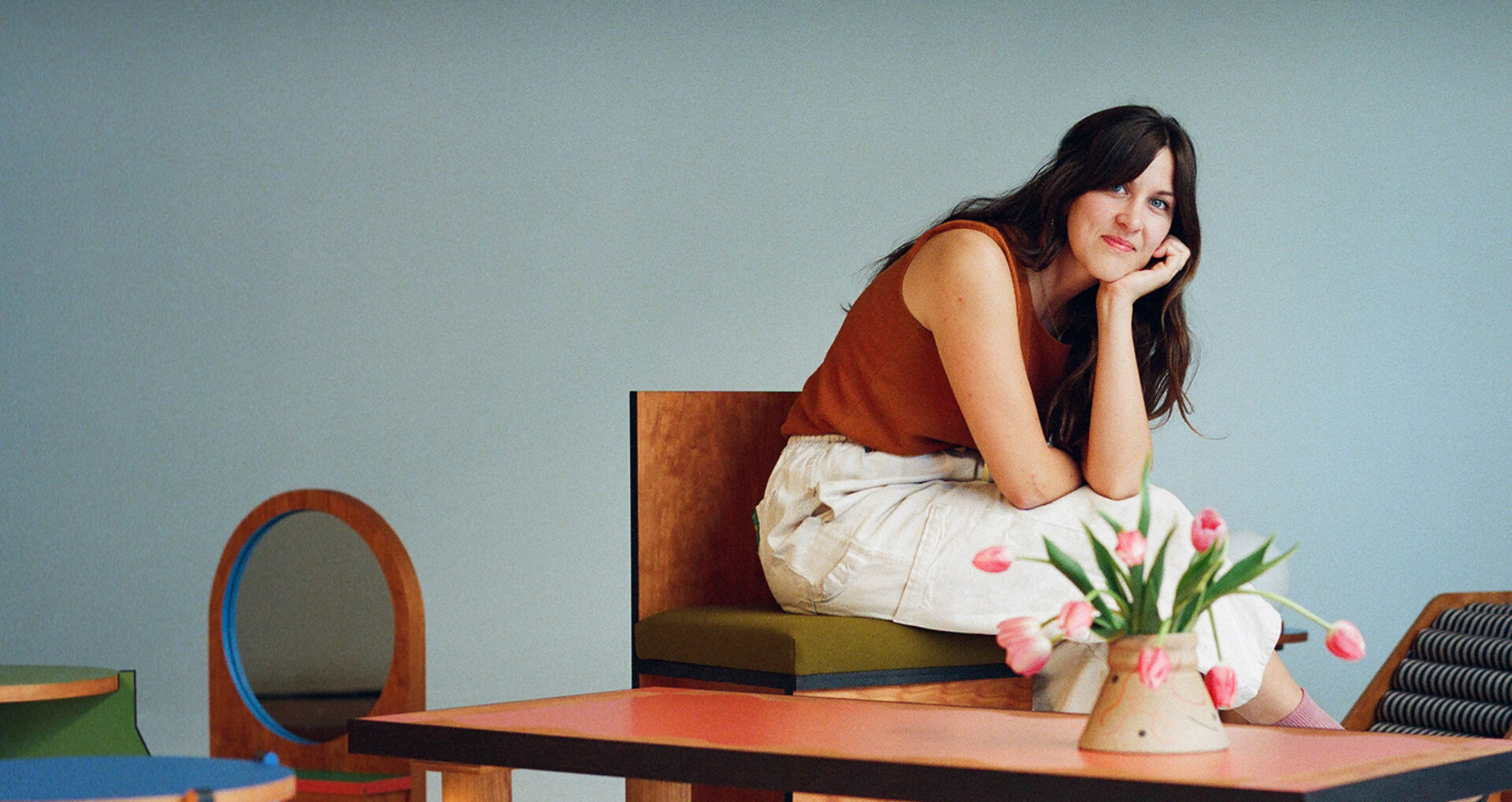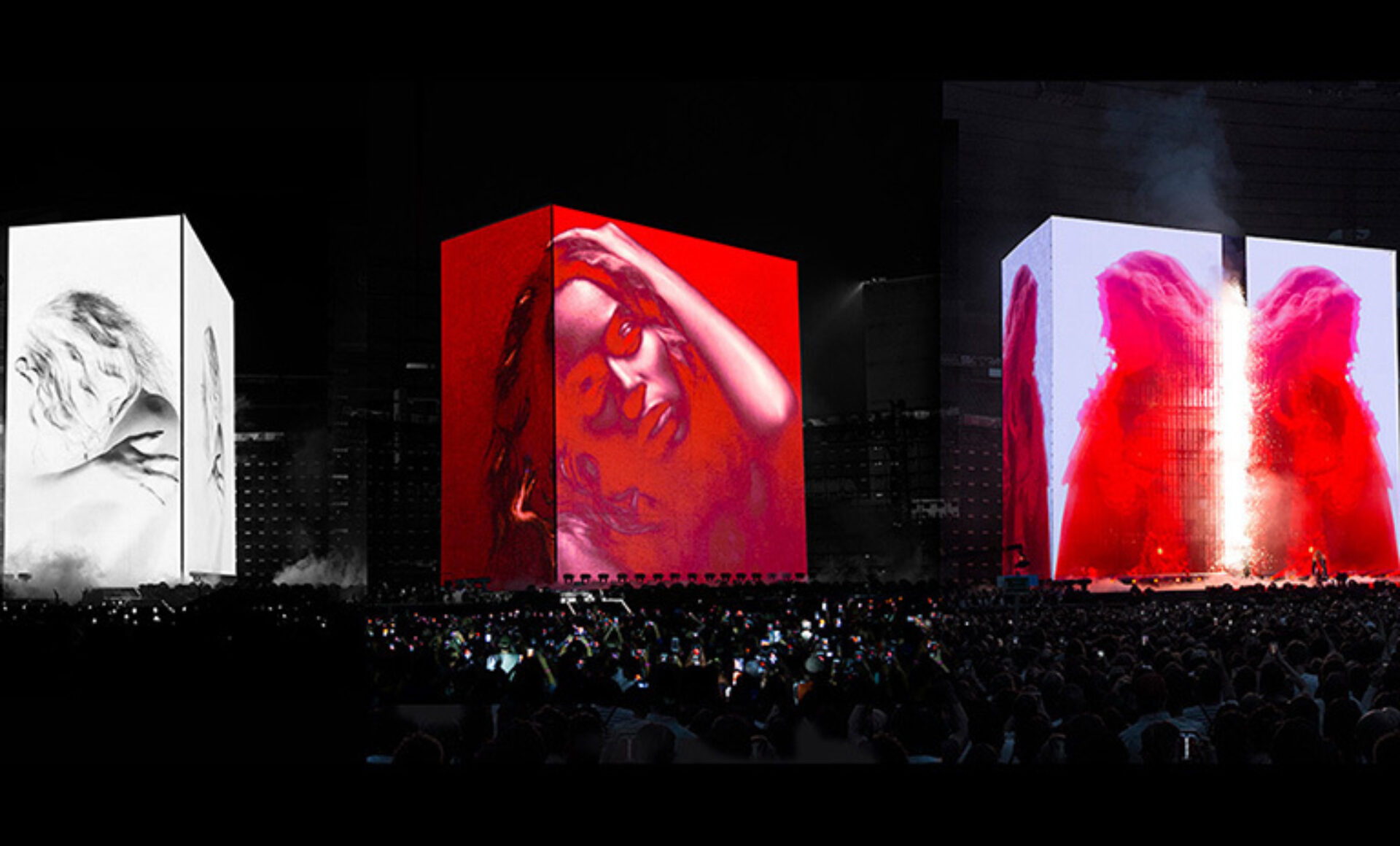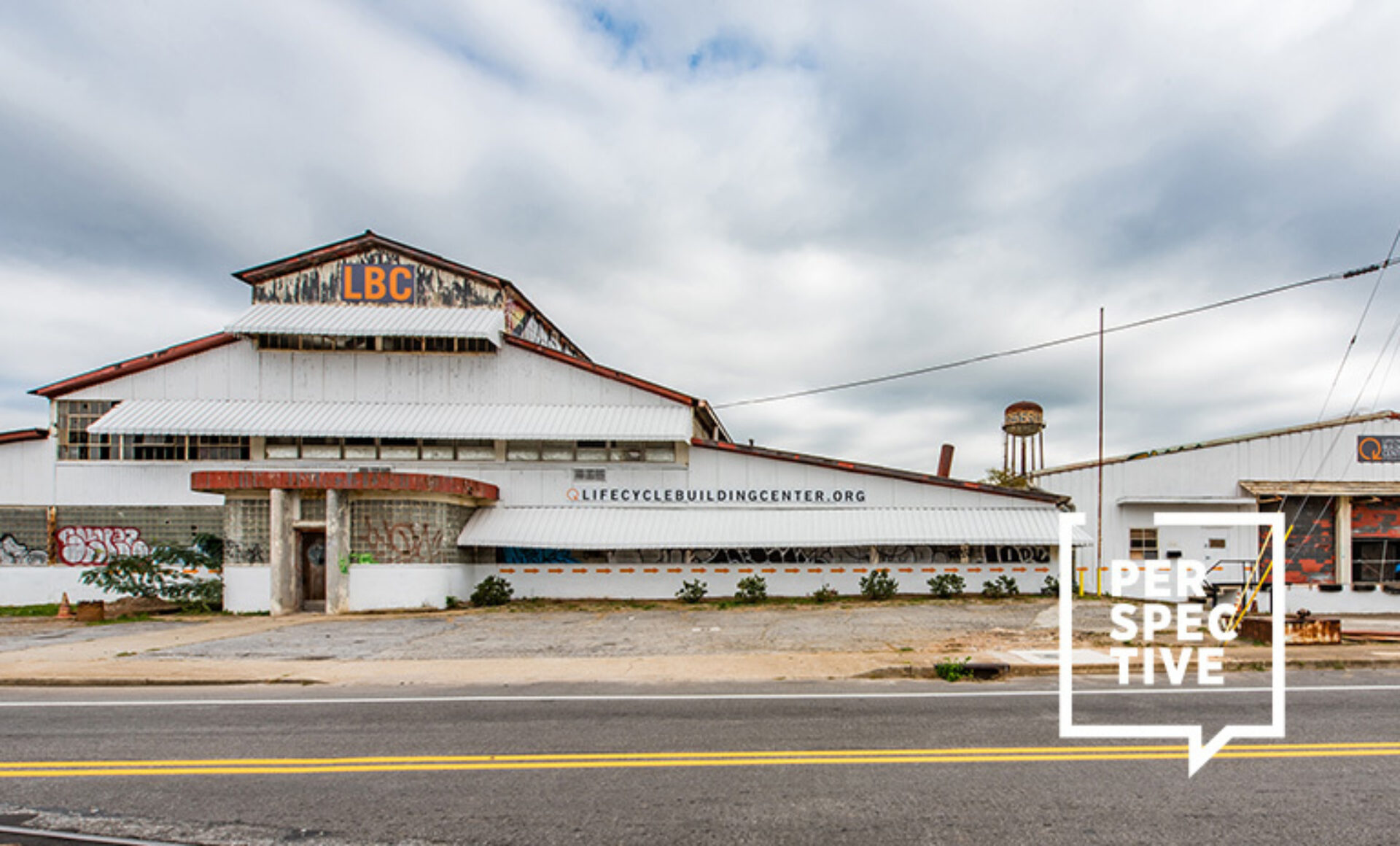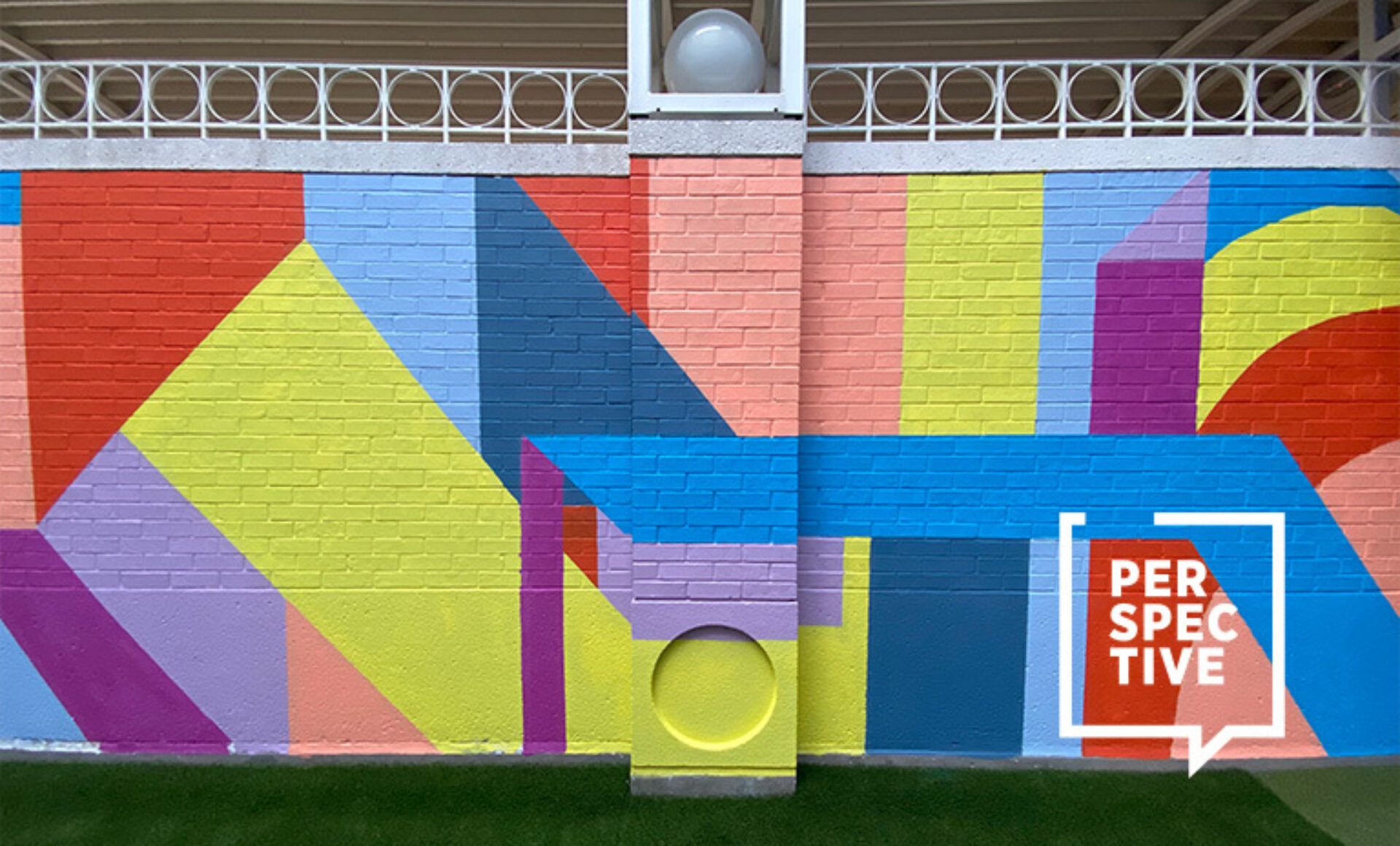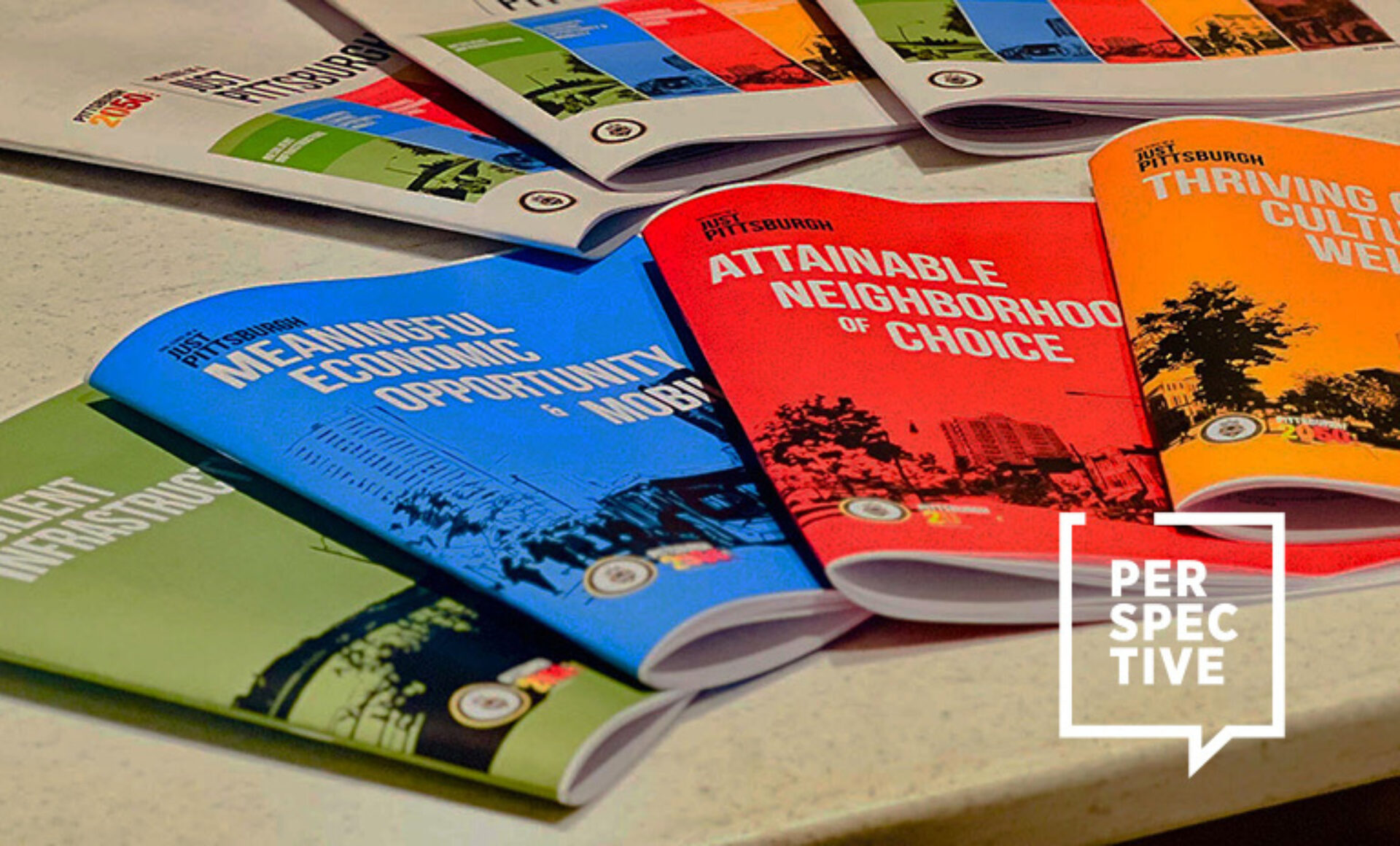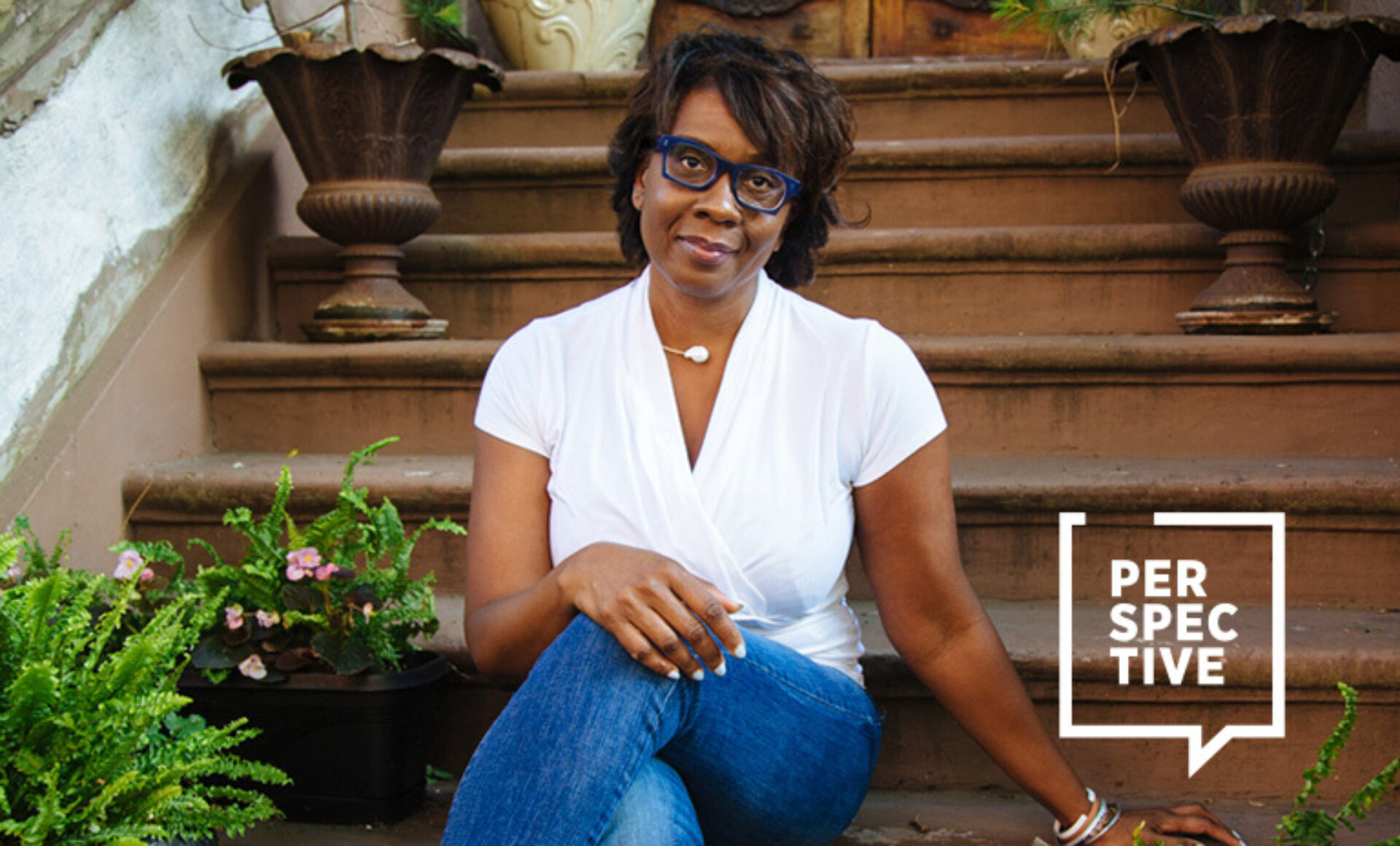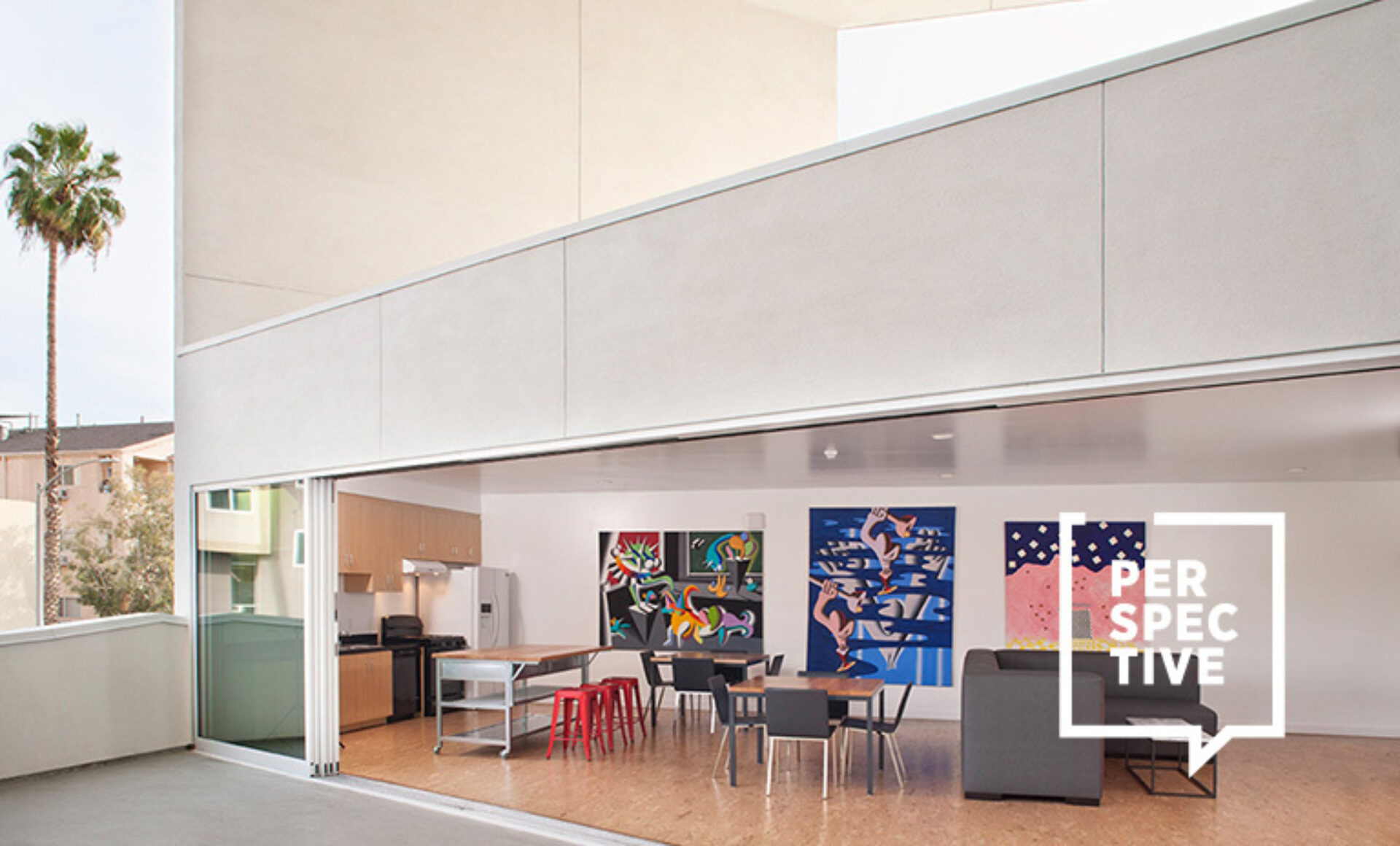(Above: Photo by Chantal Anderson)
Designers don’t just create spaces — they build worlds. Spatial designer Adi Goodrich has built worlds large and small, from interiors and installations to set design for music videos, photoshoots, and commercials. One thing they all have in common? A dreamy sense of being transported across time and space to a place filled with joy and wonder.
Goodrich lives and works in Los Angeles as co-founder of Sing-Sing Studio — an award-winning creative studio — and the designer behind Sing-Thing, a furniture line she debuted in 2022. Along with Sing-Sing Studio co-founder, animator, and director Sean Pecknold (also her husband), she has produced work for clients like Apple, Google, Lavazza, Target — and even the band Fleet Foxes.
With her interior design work, Goodrich’s worlds are firmly rooted in an experiential state, transporting people into her storytelling whether it’s a French grocery or the chic Flamingo Estate offices. She approaches her practice holistically — designing and fabricating custom lighting, furniture, textiles, and, in the case of the surrealist-inspired lifestyle shop Dreams, a giant cobalt boulder.
Join us as we take a leap into Adi Goodrich’s world, and learn about her history, influences, and inspirations. (For an even deeper dive, don't miss "15 Questions with Adi Goodrich," a bonus article only for IIDA members)
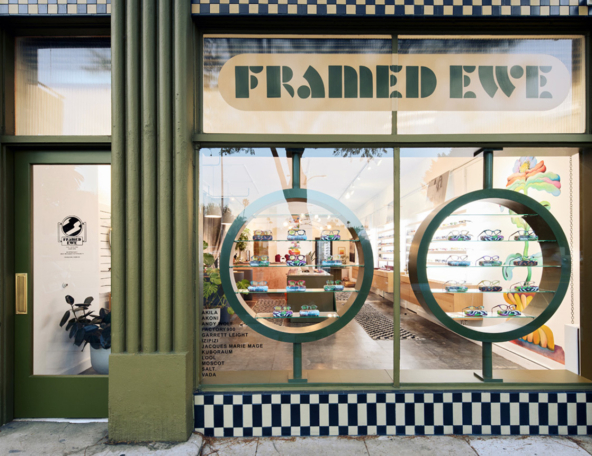
Photo by Ye Rin Mok
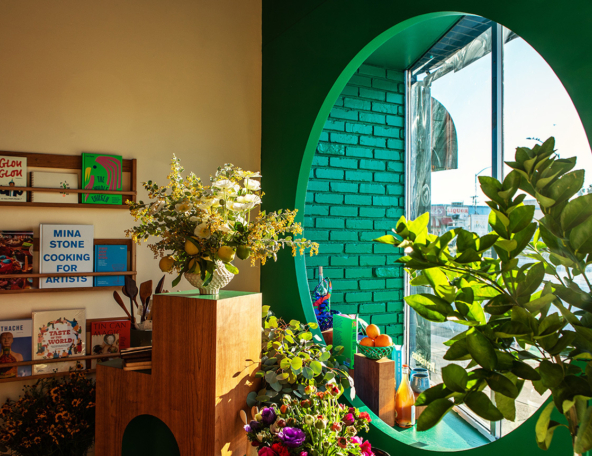
Photo by Laure Joliet
How did you first find your way to design?
My path to design began early, inspired by my father's interest in architecture and furniture restoration. I left high school early to work in his restoration shop, housed beneath our antique store. One day, a customer invited us to tour a private Frank Lloyd Wright house in West Lafayette, Indiana — the Samara House. The original owner, John Christian, who commissioned the home, walked us through, pointing out intimate details only someone close to the build would know: the house's precise siting, details in the woodwork, and the intent behind the upholstery color. He held up a plant from the yard, showing us how its seeds inspired the home's design.
I was shocked that an architect would — and could — design more than just the building itself, but also dinnerware, clothing, paintings, and furniture. Yet, it made complete sense to me that a single vision should encompass the entire feel of a space. The idea that one mind could design both how light enters a building and the exact shape of a chair was really inspiring. It brought a sense of calm — something I hadn't quite experienced before. Looking back, I believe that was the moment I started contemplating a career in design, though I didn't have the words for it yet.
After graduating from the School of the Art Institute of Chicago with an art degree, a friend got me involved in a day-long project helping the team at Barneys New York with their window displays. I must have either been really good at the job — or they just needed young, hungry talent willing to work for just above minimum wage (LOL) — because they offered me a position in Los Angeles designing windows.
For me, any creative job was an absolute YES so I made the move in 2009. From there, I spent my days designing window displays for Barneys and my nights working on film sets with some new friends, and forming a film collective. I transitioned from creating fine art to designing physical spaces, and I was THRILLED.
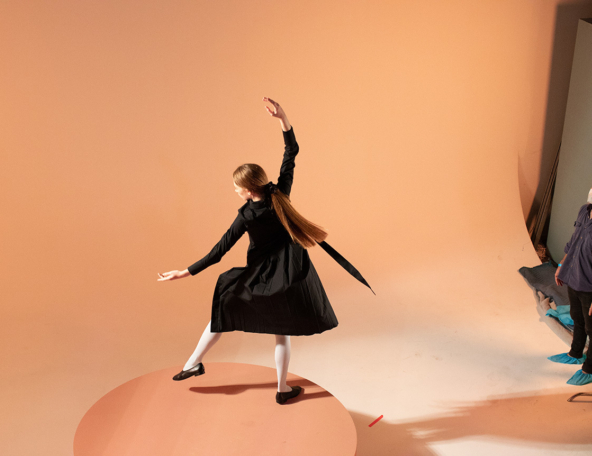
Courtesy of Sing-Sing Studio
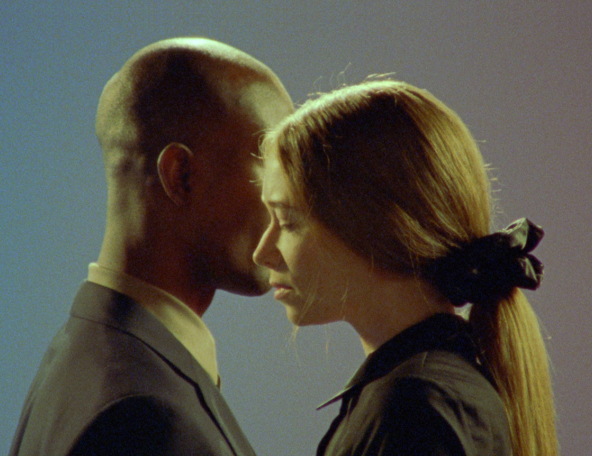
Courtesy of Sing-Sing Studio
You’re from Chicago, and currently live and work in Los Angeles — both are such creative cities in different ways. How have each influenced you, and what are your favorite parts of each?
Chicago is an incredible city, full of amazingly smart and talented people — it truly blows me away every time I visit. When I lived there, I was immersed in a vibrant art community where artists and designers took their craft very seriously. There's a strong do-it-yourself ethos, with constant shows and a collective push to keep creating. I was part of a south-side artist community that lived and worked out of an art space called the Co-Prosperity Sphere. My college years were spent curating shows, making work, and surrounding myself with artists who held similar priorities. My favorite thing about Chicago is that the artists I know proactively make things happen; they don’t wait for a larger entity to invite them to the party — they throw the party themselves.
Los Angeles has been my home for the past 16 years. I appreciate a similar creative energy here to what I found in Chicago, but in Los Angeles, I think creativity finds more opportunities. People come here to pursue their dream projects and will do whatever it takes to make them a reality. When I first moved here, I felt surrounded by the hardest-working people — there were no "lazy friends." Meeting up with someone who just worked a 15-hour day on a film set, or someone developing a new furniture collection funded and created entirely by themselves, is totally the norm here. Even with the recent downturn in production, my creative friends remain positive and continue to create. So, I feel I've landed in a place where creativity is genuinely matched with opportunity, which is my favorite part of Los Angeles — something I sometimes feel Chicago lacks.
How did design draw you and Sean together and what’s the best thing, and most surprising thing about collaborating?
Sean and I met when we were both hired for a Sony commercial — he was the director, and I was the production designer. Sean brings a playfulness to his directing and approaches the environments that hold a film's narrative very similarly to me. We hit it off creatively immediately. I remember our first meeting was to share sketches of what the sets might look like based on his script — and when we opened our sketchbooks, we had drawn the exact same sets! It was hilarious, and I think we both knew we had met our match.
The most surprising thing about collaborating with him is this: no matter how right I think I am, how settled I believe my design is, and how good I think it can be, he pushes it further and makes it even better. He is definitely my secret weapon, and I imagine he'd say the same about me.
As a spatial designer working across set design, music videos, event design, and commercial interiors — how do you go about world-building, and what is essential to this process for you?
Honestly, all these disciplines feel quite similar for me. There's no fundamental difference, say, between designing a music video set and a retail store. The client arrives with their own inherent backstory, and my job is to find the reason and intent behind the world I build around that narrative.
The most essential part of this process for me is that people enter this storytelling world with me — that they truly buy into the narrative I create around the design. If clients aren't curious and inspired, I’ve found that we usually aren’t a great fit. I also believe it's crucial to be super flexible while designing, both on my end and with clients.
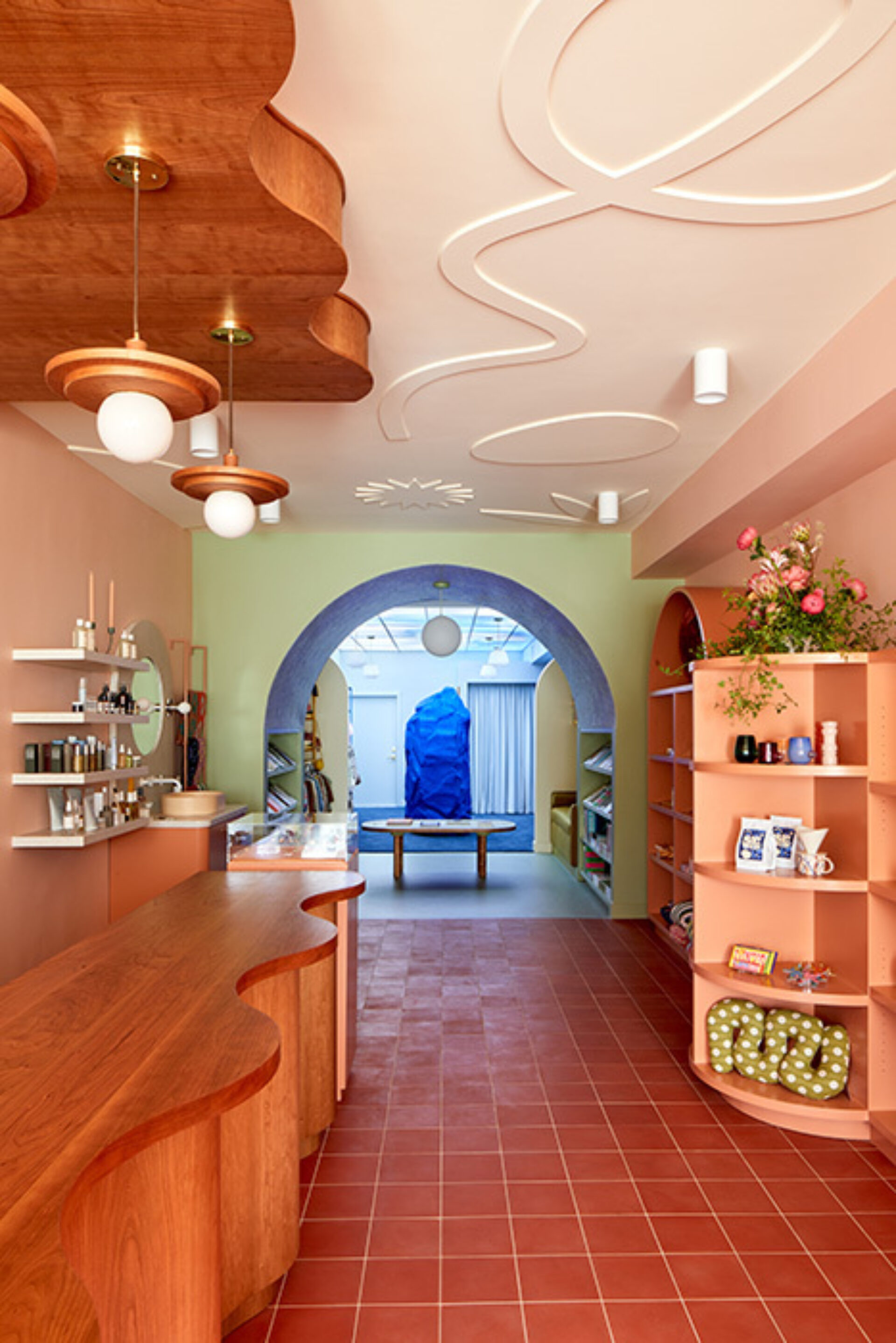
What inspires you?
Oh, everything! Honestly, it can be a crack in the sidewalk, a dusty drape in a window, a Matisse painting of a goldfish, a 1950s film, the color of an egg, the way light hits a certain material, or a piece of furniture. I’m endlessly inspired, but mostly by what people might consider mundane — the everyday juxtapositions you find in the world simply by looking.
Sean and I have a tradition of taking day-long walks in Los Angeles, choosing one street to follow from beginning to end. Wilshire Boulevard, for example, stretches 18 miles from downtown to the ocean. These walks are probably when I feel most inspired all year. We see neighborhoods seamlessly unfold into one another — architecture in its many forms: new, old, weathered, layered, historic, and seemingly insignificant. I witness so many wonderful moments during these walks that ultimately end up in my work. It fills me more than any museum visit ever could.
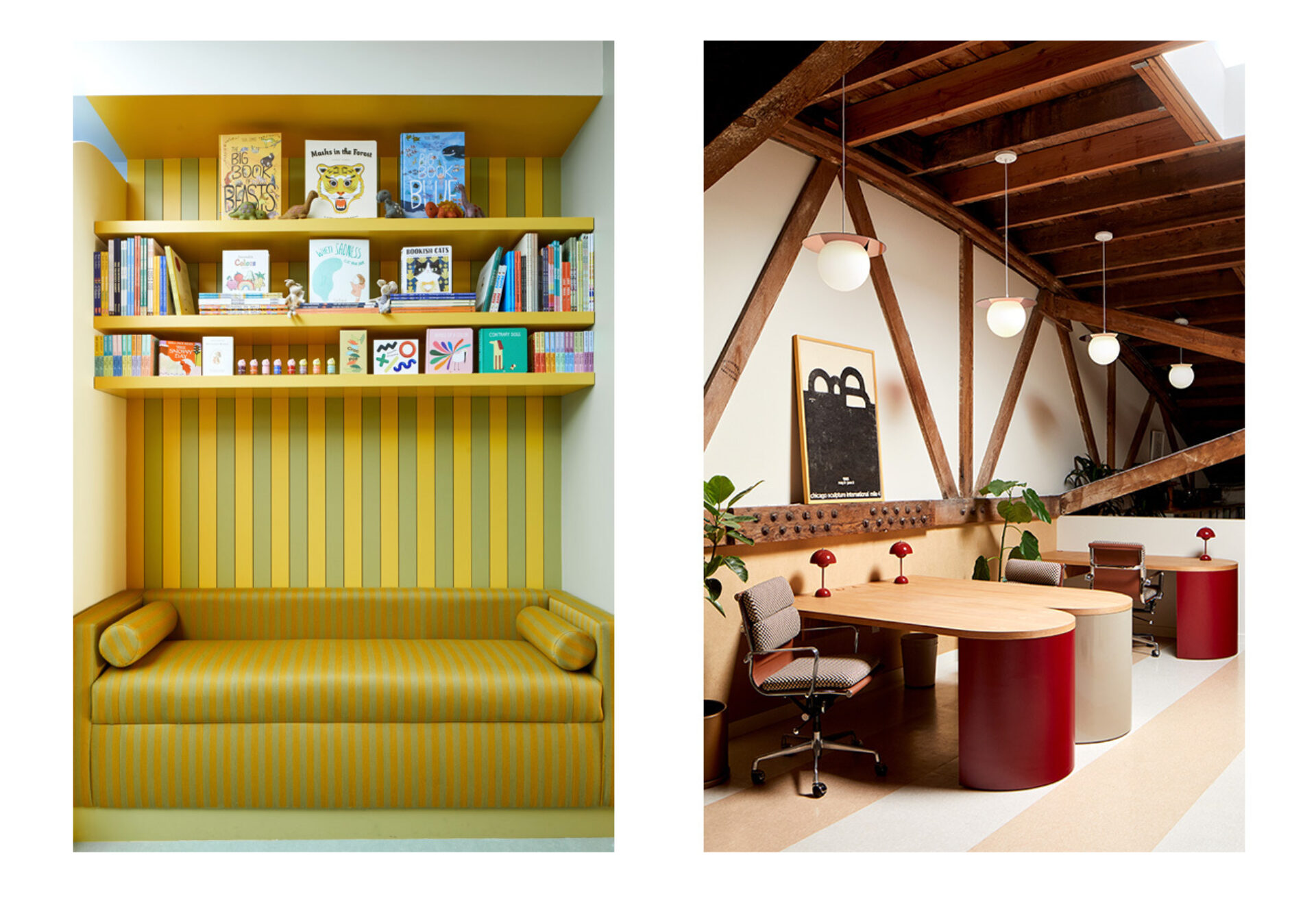
Photos by Ye Rin Mok
What are you feeling super optimistic about? Any new projects you can talk about?
I'm actually preparing for a furniture show in November! I developed my first collection in 2022 [Frunchroom, below], and this will be a slight alteration of that first collection with a few new pieces and colorways. I'm, of course, excited about the furniture itself — but I'm truly getting inspired by the exhibition design that will accompany it. As a set designer, the "scene" that holds the objects is just as thrilling for me to design. It would be a lost opportunity to simply "plop" the furniture in a space, so I’m currently obsessing over how this show itself can become the visual container for the entire collection. More to come!
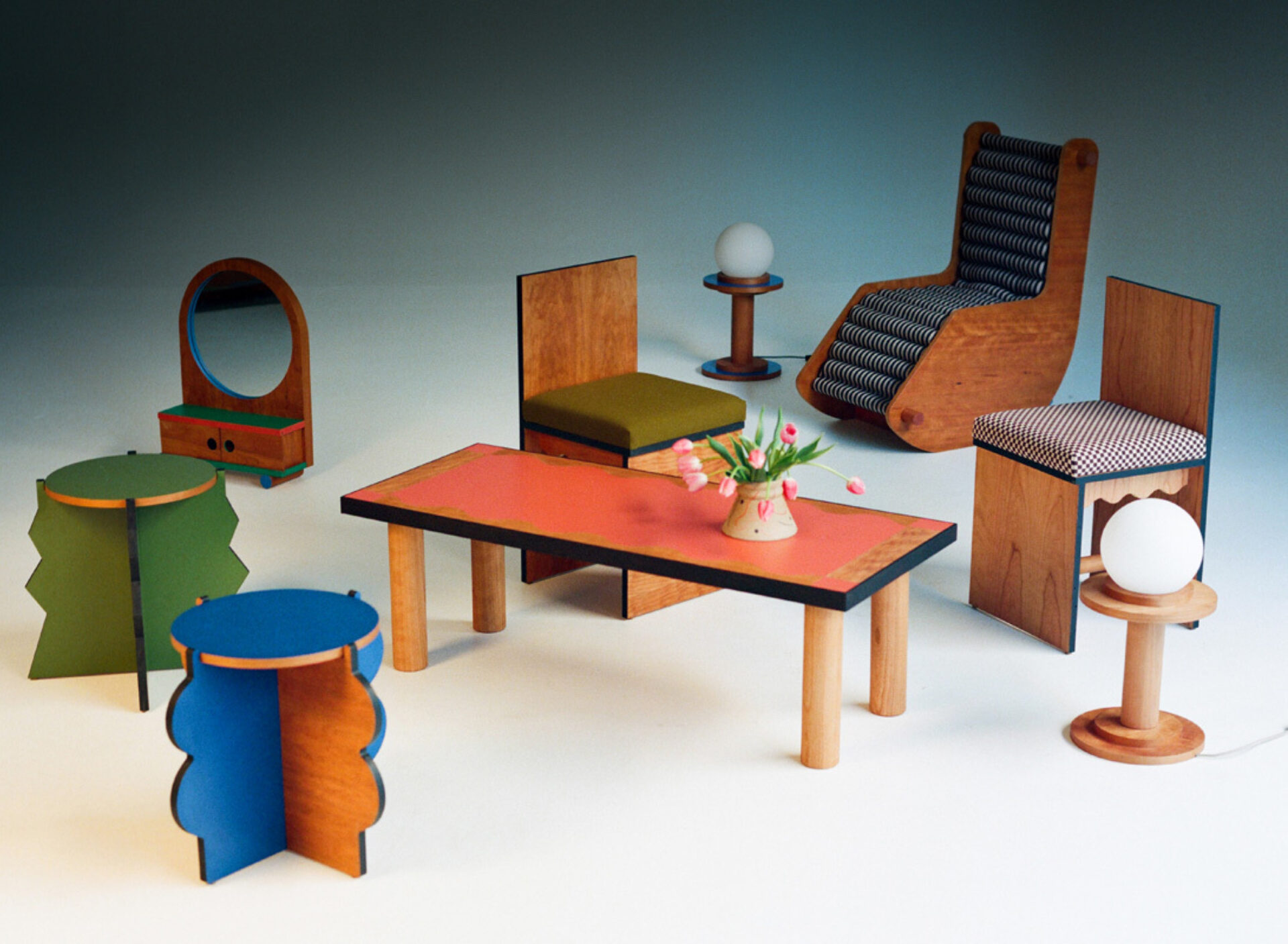
Photo by Chantal Anderson
